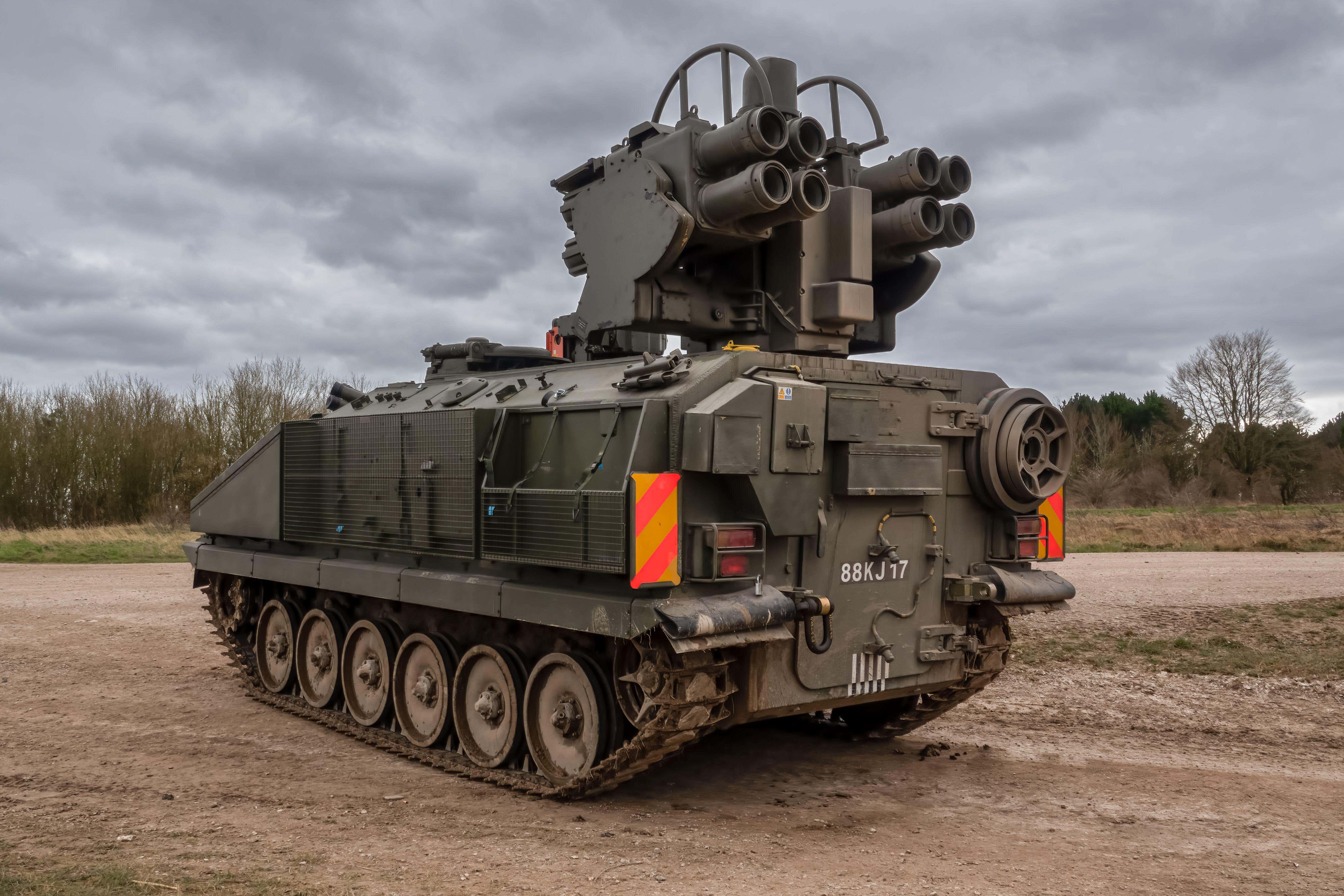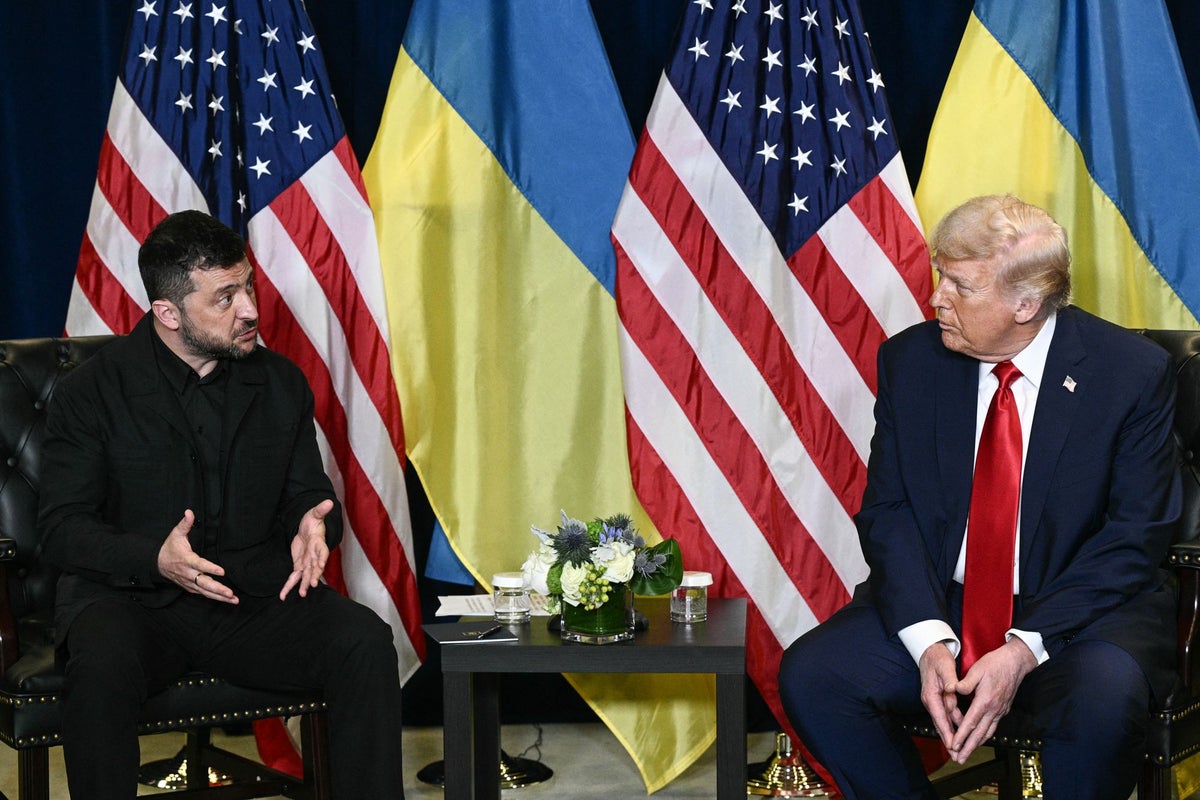Donald Trump has performed what might be his biggest – and most startling – shift in foreign policy to date.
On Tuesday, after meeting with Ukraine’s president Volodymyr Zelensky on the sidelines of the United Nations General Assembly (UNGA), he agreed with the notion that Nato countries should shoot down Russian aircraft if they enter their airspace.
Later, on his Truth Social platform, Trump suddenly declared that Ukraine could not only defeat Russia but “WIN all of Ukraine back in its original form” – and even, he concluded, “go further than that!”.
What this means in practical terms is unclear, and is likely not worth the ink to unpack. (Is Trump endorsing more Kursk-style incursions into Russian territory? Who knows.)
But after months of repeatedly expressing disappointment in his former buddy-in-chief, Russian president Vladimir Putin, Trump went as far as to describe the Russian army as a “paper tiger”.
So what has changed – and why?
First, this is a far cry from the public bust-up in the Oval Office back in February, when Trump mocked Zelensky’s military fatigues, berated him for not being thankful enough for US military aid, and shut him down because he had “done a lot of talking”.

In that painful-to-watch meeting, during which the Ukrainian ambassador held her head in her hands as the world looked on in horror, Trump and his vice-president, JD Vance, tried to bully Zelensky into accepting a ceasefire deal that would see Ukraine cede swathes of territory captured by Russia since the start of its full-scale invasion.
“You have to be thankful. You don’t have the cards. You’re running low on soldiers,” Trump warned.
Going back to the policy reversal, of course it’s entirely in character for Trump to lean into bombastic, controversial statements, posted on social media, that seemingly blow up everything that came before.
I recently spoke to several diplomats from the Middle East, who are currently grappling with another major war: the conflict in Gaza.
They told me it was a “nightmare” trying to navigate the actions of such a powerful world leader who can change his position depending on who spoke to him last, or on what he believes might best serve his interests at that particular moment. (See: Trump sharing an AI-generated video of a glittering Trump Tower in his vision of a disturbingly dystopian “postwar” Gaza.)
They went so far as to say that there isn’t really a US administration, in the traditional sense, at all.
Instead, they described a single man – deeply invested in notions of deals and real estate, quick to tire – who is surrounded by a number of individuals, some of whom hold strong ideological views, but none of whom are informed by the usual cast of genuine experts, which leaves them scrambling to make sense of ideas.

Second, Trump seems increasingly irritated by his inability to “solve” the Ukraine war, the one global crisis whose resolution could potentially win him the Nobel Peace Prize he allegedly covets.
Trump has repeatedly marketed himself as the peacemaker president. His favourite line, which he repeated during his UNGA address, is that he has “stopped seven wars”.
In a rambling speech – made more chaotic by the initial lack of a teleprompter – he said he had been “working relentlessly” on global conflicts, but confessed: “Of the seven wars that I stopped, I thought [Ukraine] would be the easiest because of my relationship with President Putin.”
He has spoken frequently about the breakdown of that relationship, with language that almost mirrors the sort one would use in the context of a romantic breakup.
He was disappointed by the outcome of the August summit in Alaska, which marked the first time Putin had been on US soil in a decade. Since then, Trump has repeatedly said that “Putin has let me down”.
Third, there has been a concerted effort by Europe to influence Trump’s view. Several European leaders have visited Washington in the past month, urging caution in dealing with Putin. They have also responded to Trump’s criticism that Europe isn’t “doing enough” by stepping up its provision of military and financial aid to Ukraine – although they have faced a second line of attack, most recently in Trump’s UNGA address, where he insisted that they need to stop buying Russian energy .

Ukraine was almost certainly at the top of the agenda during Trump’s second state visit to the UK last week.
And finally, Trump may simply be realising that he doesn’t want to back a losing horse, particularly while facing domestic pressure. In his recent Truth Social post, he wrote that he had recently learnt that “Putin and Russia are in BIG economic trouble”.
He also said Russia has been “fighting aimlessly for three and a half years” in a war that, according to him, should have taken a “Real Military Power less than a week to win”.
That framing is almost a complete reversal from his February tirade in the Oval Office, when he shouted at Zelensky: “If you didn’t have our military equipment, this war would have been over in two weeks.”
There has been increasing alarm back in the States at Trump’s apparent willingness to cosy to up to Putin – who is publicly playing him – with nothing to show for it. But the biggest question is how long this new position will last.
This is clearly something Zelenksy is concerned about, as he has jumped on and leaned into Trump’s comments, hoping no doubt to make this the de facto, baseline position moving forward. But, as we have seen so far across both of Trump’s terms in office, there are no guarantees.




